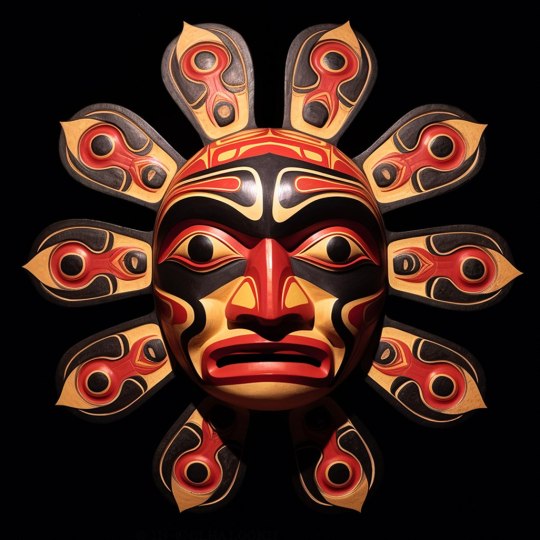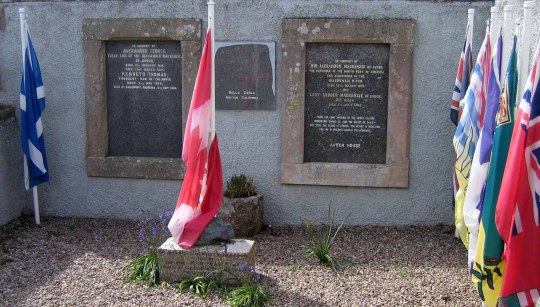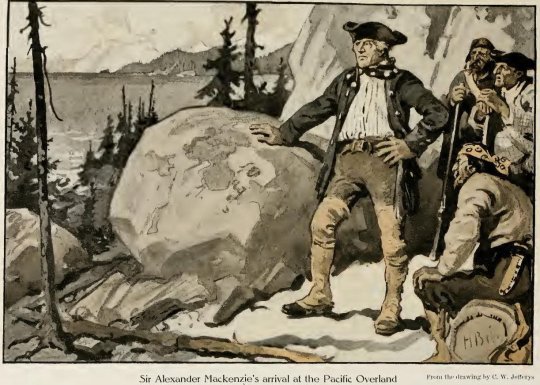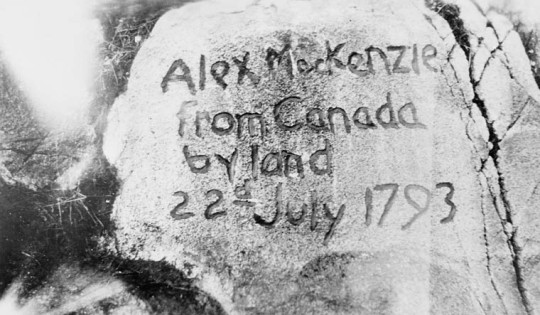#nuxalk
Explore tagged Tumblr posts
Text
For this Native American History Month, I wanna send a special shout out to intersex Native and Indigenous folks, to gender non-conforming Native and Indigenous folks, to nonbinary Native and Indigenous folks, to genderfluid Native and Indigenous folks, and especially to intersex Black Native and Afro-Indigenous folks, to gender non-conforming Black Native and Afro-Indigenous folks, to nonbinary Black Native and Afro-Indigenous folks, to genderfluid Black Native and Afro Indigenous folks.
I'm Black Native and Afro-Indigenous; I'm nonbinary and genderfluid, and in context with me discovering and reclaiming gender identities and gender expression descriptors from my Native/Indigenous culture and especially from specific Indigenous groups in my blood, I'm nadleehi (Navajo/Diné), asegi udanto (Tsalagi), sxints (Nuxalk), atsione (Tsalagi) and dilbaa (Navajo/Diné again). (I also have extensive heritage from Algonquin, Lakota, Blackfoot, Métis, Iroquois, Seminole, Nêhiyaw, Mi'kmaw, etc. and many, many, many, many other tribes.)
Then on top of that, I found out I was born intersex which I found out later in life, which along with me learning the history of how Native Americans have often held intersex folks, androgynous folks, feminine males and masculine females in high respect has been a very healing and enlightening part of my journey, culturally and expression wise.
In fact, I've been thinking about how American western culture fixates on sex and gender way too much and mainly in context of forcing colonialist eurowestern gender boxes on folks, especially black and indigenous folks, forcing labels or labelessness on us too often. And as an Afro-indigenous woman/femme, I've already been in the process of deprogramming from colonialist gender norms and reconnecting with my blackness and my Native/Indigenous American and Indigenous/Aboriginal roots, and at times my gender expression and identity intersects with that. Lily Gladstone (who uses she and singular they pronouns) worded it perfectly as decolonizing gender and that's the journey I've been on, and a journey that I'm still on as it's ever evolving and increasingly more nuanced and complex.
Anyways, I just wanna say that I love you guys, I see you and I wanna send out as much love, light and warmth to many of you as possible. 💕💕


#intersex#indigenous#afro indigenous#indigiqueer#nadleehi#dilbaa#asegi udanto#sxints#navajo#diné#tsalagi#nuxalk#native american history month
131 notes
·
View notes
Text

Spirit of Resistance
Danika Saunders
from the website: “The world was once cloaked in darkness, with only a dim copper light. The Four Carpenters created Qwawx (raven) from a piece of charcoal, and his cunning enabled him to steal the globe of light from Alhkw’ntam’s (creator’s) longhouse. Raven released the sun, moon, and stars, bringing light and joy to the world. Qwaxw, is not just a bird but a symbol of transformation, cunning, and creation.”
-Danika Saunders
63 notes
·
View notes
Text

plxwla in #Nuxalk orthography). Within the Nuxalk language, "Nuxalkmc" is the term for the people, and "ItNuxalkmc" is the term for the language, and these terms are increasingly being
2 notes
·
View notes
Text
In "How the Salmon Were Brought to This World", a Nuxalk (Bella Coola) story that describes the origin of food, the first two-spirit accompanies all the animals (including a Raven, cormorant, crane, osprey, hawk, and mink) on a long canoe journey in their quest for the first salmon.
"Biological Exuberance: Animal Homosexuality and Natural Diversity" - Bruce Bagemihl
#book quote#biological exuberance#bruce bagemihl#nonfiction#native american#nuxalk#bella coola#creation story#two spirit#raven#corvus corax#cormorant#phalacrocoracidae#crane#gruidae#osprey#pandion haliaetus#mink#neogale vison#canoe#salmon#salmoninae
1 note
·
View note
Video
youtube
Nuxalk totem pole leaves B.C. museum to begin trek home, February 13, 2023
The Royal B.C. Museum in Victoria has repatriated a totem pole to the Nuxalk Nation on the central coast of B.C., after it was taken from their land more than 100 years ago. Members of the community say they hope the decision will make it easier to repatriate more of their items that are still in the museum.
CBC
Further reading:
CBC: Hugs, smiles and tears greet Nuxalk totem pole as it leaves Victoria, B.C., museum, February 23, 2023
#Nuxalk Nation#first nations#Royal British Columbia Museum#Victoria#Bella Coola#British Columbia#colonialism#United Nations Declaration of the Rights of Indigenous Peoples#repatriation#art#culture#Canada#museums#history#wood#sculpture#identity#carving#Snuxyaltwa#CBC#news#20th century#19th century#Louie Snow#Deric Snow#Talleomy#South Bentinck
66 notes
·
View notes
Link
3 notes
·
View notes
Text
my paper topic is so cool but i wish i didn’t have to write it right now cuz guys i’m just not feeling it i’m sorry but i’m not
#this is actual agony#i’d love to be writing about nuxalk syllabic structure#sometime else#my brain is not fucking working#corpus mental breakdown watch
0 notes
Link
A totem pole removed from an Indigenous burial site more than a century ago and kept on display in a Canadian museum has been repatriated to the Nuxalk Nation.
More than 100 Nuxalkmc traveled more than 600 miles from Bella Coola, British Columbia, to Victoria to reclaim their totem pole from the Royal BC Museum on Monday and bring it back to its rightful home.
As the totem pole was lifted out of the museum and lowered to the ground, its first time returning to Mother Earth, Nuxalkmc sang the Thunder Song -- followed by women blessing and reawakening the totem's spirit.
"We all cried when it landed on the ground," Nuxalk Hereditary Chief Deric Snow told CNN. "It was the feeling when your emotions reach the highest point of your life. I've never dreamed we would be able to do this."
Continue Reading.
Tagging: @politicsofcanada
#British Columbia#totem pole#Indigenous#First Nations#cdnpoli#canada#canadian politics#canadian news#canadian#repatriation
2K notes
·
View notes
Text
Splatoon: The Vestigial Species - Design Ideas (North America)
If you have not viewed the main post first, please do so. Otherwise, here is a list of archaeological cultures which you are free to choose from to use as an inspiration when designing your human society!
Arctic
Saqqaq Culture
Groswater Culture
Independence I Culture
Independence II Culture
Dorset Culture
Old Bering Sea Culture
Birnirk Culture
Punuk Culture
Thule Culture (Proto-Inuit)
Pacific Northwest
Old Cordilleran Culture
Tlingit
Haida
Tsimshian
Kwakiutl
Coast Salish
Nuxalk
Nuu-chah-nulth
Chinook
Area of the United States
Clovis Culture
Folsom Tradition
Old Copper Complex
Poverty Point Culture
Adena Culture
Fort Ancient Culture
Hopewell Culture
Mississippian Culture
Anasazi
Archaic-Early Basketmaker Culture
Early Basketmaker II Era
Late Basketmaker II Era
Basketmaker III Era
Pueblo I Period
Pueblo II Period
Pueblo III Period
Oasisamerica
Mogollon Culture
Hohokam Culture
Patayan Culture
#splatoon#splatoon 2#splatoon 3#splatoon 4#splatoon headcanon#splatoon fanart#splatoon fandom#splatoon art#fan concept#art collab#art contest#collaborative projects
7 notes
·
View notes
Text
From crab monitoring and bear patrols to rescue operations, the watchmen are the official eyes and ears of indigenous communities
It was started more than 15 years ago in response to heavy commercial crab fishing in an area where the federal government had done little independent monitoring to determine if a fishery was sustainable.
It is the quintessential guardian assignment: remote monitoring work of immediate importance to a small community, far beyond the gaze of administrators at understaffed government agencies.
The watchmen are the eyes and ears of their First Nation community on the lands and water of their territory, which spans about 18,000 sq km (7,000 sq miles, roughly the size of Kuwait) on the central coast of British Columbia around the town of Bella Coola, 430 mountainous kilometres northwest of Vancouver.

For Mack, being chosen to join the guardians was a godsend. “I had no idea what I was going to do with my life,” she says.
#solarpunk#solar punk#indigenous knowledge#community#indigenous guardians#wildlife#environment#nature#life
18 notes
·
View notes
Text


“The deity is within you, not in ideas and books. Truth is lived, not taught.” ― Hermann Hesse
Among the Nuxalk, Sun is sometimes represented as being the master of sky world who, at the beginning of the world, placed four master carpenters on four separate mountain peaks to collectively create the world and found the Nuxalk clans. Some Salish cultures regard the Day, Daylight or the Sky to be the supreme supernatural being that will sometimes reveal itself to people disguised in human or animal form to bestow a great spirit power.
Kwakwaka'wakw Northwest Coast Native Sun Mask Talon Abraxas
72 notes
·
View notes
Text
I always seem to get bogged down in phonology when I'm conlanging. I'm so indecisive because I love open syllable structure like in finnish or in greenlandic. But I also like more consonant heavy languages like Haida, Tlingit, or Nuxalk. I think Nuxalk especially has an elegantly maximalist approach to syllable structure.
I'm thinking of verbs being consonant heavy as I plan to make them dense with grammatical information and nouns to have a more open syllable structure.
30 notes
·
View notes
Text

Fungi
Danika Saunders
57 notes
·
View notes
Text

Nuxalk; it is a derivation of the neighbouring #Wakashan-speaking coastal Heiltsuk people's name for the Nuxalk as bəlxwəlá or bḷ́xʷlá, meaning "stranger" (rendered plxwla in Nuxalk orthography). With
2 notes
·
View notes
Text
Some repatriation efforts in my city:
The RBCM doesn't have the greatest track record but this was touching to see. Let's hope this work continues.
107 notes
·
View notes
Text




12th March 1820 saw the death of Alexander Mackenzie (Alasdair MacCoinnich), the explorer of western Canada.
Alexander Mackenzie is recognised as leader of the first European expedition to cross the North American continent from the Atlantic to the Pacific, north of Mexico. Because of Mackenzie’s success the rich coastal territory we know as British Columbia today, is part of Canada. If he had been unsuccessful, it could be argued that British Columbia would probably have belonged to another country.
Mackenzie was born in Stornoway on the Isle of Lewis in the Western Isles of Scotland in 1764. He emigrated with his father to New York at the age of 10 years. When he was 15 years old he entered the service of a Montreal firm engaged in the fur trade. Aged just 20, he obtained a share in the business and became a trader in the West, four years later he was put in charge of trade in the Athabasca region and settled at Fort Chipewyan on the South shore of Lake Athabasca, from here he staged two expeditions; one to the Arctic Ocean in 1789, and another to the Pacific Ocean in 1793.
When MacKenzie was 25 years old he set off to find the Pacific Ocean, but realised his lack of navigation skills was a massive handicap to an explorer, so decided to put this right by spending the following winter in England studying navigation, cartography and astronomy.
In 1792 Mackenzie set off a second time from Fort Chipewyan, crossing the Rockies through the pass that bears his name, with canoes and voyageurs (people who engaged in the transportation of furs by canoe), the party consisted of himself, his cousin Alexander Mackay, six voyageurs and two Indians as hunters and interpreters.
During the journey they came across Indians who had not previously seen white men, but had some iron which they had procured by trade with other natives who had journeyed a great length to the sea. The Indians told Mackenzie of the route from the Fraser River up the West Road River to the Bella Coola River and the sea, the first commercial overland route in British Columbia. Without the guidance of Indians, it is unlikely that Mackenzie would have been able to reach the Western Sea.
Mackenzie found the Natives dependent on the salmon runs and very superstitious so as not to displease the Salmon Gods. He was truly amazed with their boat handling techniques, they effortlessly poled their way down river through columns of water and the tallest trees Mackenzie had ever seen.
Mackenzie learned of hostile natives, but had quite a reputation for strength and fierceness which his crew respected and the voyageurs pleaded with Mackenzie to head back. “I have work to do here,” Mackenzie replied. “When it is finished we will go back, and not before.” Mackenzie, however was becoming apprehensive and commanded his men to load the canoe ready for an immediate departure. He managed to get an astronomic reading.
At four thirty the next morning they had paddled to Porcupine cove and a few hours later they pulled the canoe up on the beach at the Bella Coola village. The explorers proceeded up river, being received hospitably at the numerous villages.
The Nuxalk gave them all the smoked salmon they wished to carry and they set out on the trail up the mountain. Every man of Friendly village accompanied them for the first hour, then parted from them with signs of regret. That night the explorers were delighted in the feeling of being almost out of danger and well on their way homeward.
Mackenzie’s route to the Pacific proved too difficult for others to follow, but this does not diminish the value of his great 117 day expedition across Wild America.
In 1801 the journals of his exploratory journeys were published, he served in the Legislature of Lower Canada from 1804 to 1808.
In 1802 Mackenzie was knighted Sir Alexander Mackenzie by King George III, and recognized as leader of the first European expedition to cross the North American continent from the Atlantic to the Pacific north of Mexico. Had Mackenzie failed to complete his epic journey across the continent to the Pacific Coast perhaps this rich coastal territory we know as British Columbia would probably belong to a country other than Canada.
In 1812, he married and returned to Scotland. Mackenzie died in 1820 of Bright’s disease (kidney disease as we know it today), aged 56. He is buried in Avoch, on the Black Isle, Ross and Cromarty, as seen by the pic with the flags. Set into the wall of the memorial enclosure is a stone brought from Bella Coola and inscribed in red with the same words Mackenzie used to record his exploration success,
Alex Mackenzie From Canada by land 22nd July 1793.
9 notes
·
View notes